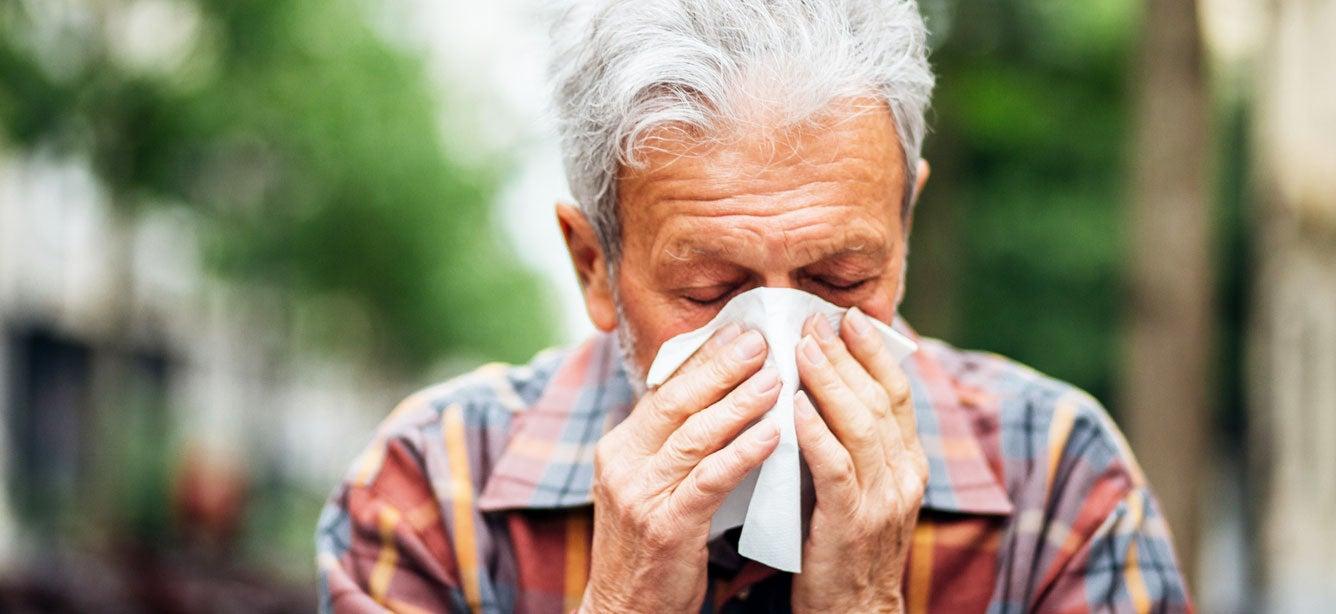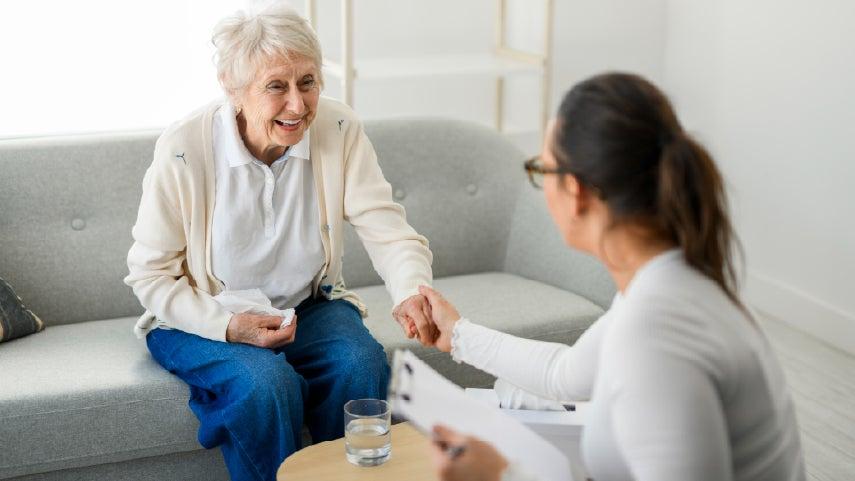
Related Topics
With all the talk about COVID-19 and the flu and how they impact older adults, sometimes the common cold can be overlooked. So what exactly is a run-of-the-mill cold? It refers to a mild infection of the nose and throat that produces a series of uncomfortable symptoms, such as a runny nose or congestion.
Common cold causes in the elderly are viruses such as rhinovirus, coronavirus, or respiratory syncytial virus (RSV). Most adults experience an average of 2 to 4 colds a year. The typical cold season runs from September to May.
Are colds worse for older people?
As we get older, our immune system can’t fend off infections as well as it did when we were younger. That’s why cold and flu season, also known as the fall/winter virus season, is a particularly dangerous time of year for people age 65 and older. Even a seemingly mild cold can pose a health threat to older adults. It can lead to pneumonia, an acute illness that takes the lives of thousands of people in the U.S. each year. Additionally, if you have a chronic condition such as asthma, COPD, or emphysema, a cold can intensify the symptoms from those conditions for several weeks after your cold symptoms have resolved.
How to tell the flu from the common cold
When you get a stuffy nose or a tickle in your throat, the first thing you might wonder is whether you’re suffering from a common cold, the flu, or COVID-19. Here is a quick guide explaining the differences between the three.
Cold symptoms are usually milder than the flu or COVID-19 and tend to come on gradually. Key symptoms include:
- Congestion
- Runny nose
- Sore throat
- Mild cough
- Headache
Flu symptoms usually have a more sudden onset. Some key signs of the flu are:
- Persistent high fever and chills
- Muscle aches and/or headache
- Pronounced fatigue and weakness
- Dry cough
COVID-19 symptoms can overlap with many cold and flu symptoms—but this illness also has some distinctive signs. These include:
- Loss of smell and/or taste
- Diarrhea, nausea, and vomiting
- Shortness of breath
- Chest pain or heaviness
While the section above provides guidelines on how to tell the flu from the common cold or COVID-19, you should always call your doctor to describe your symptoms. They can advise you on the next steps.
What are the best cold remedies for older adults?
What helps the elderly with a cold? If you’re wondering how to treat a common cold at home, it’s important to understand there are no medicines to “cure” a cold. Rather, most colds run their course and naturally resolve within a week or two. In older adults who are in poor health, symptoms may last longer.
That said, there are things you can do to help reduce your symptoms and make yourself more comfortable while you’re battling a virus. First of all, try to get as much rest as possible to allow your body to heal. This means abstaining from social outings and activity if you can and making sleep a priority. If you're a smoker, make an effort to quit or at least cut back on smoking until your symptoms have eased.
Certain over-the-counter medications such as NSAIDs (e.g. ibuprofen, acetaminophen), decongestants, and antihistamines can provide short-term relief from your symptoms. However, it’s best to talk to your doctor first to find out what they recommend. Some natural, at-home cold remedies include:
- Chicken soup, shown in one study to ease inflammation, improve rehydration, and even slow infection
- Tea with honey and lemon, which soothes throat pain
- Adding a cool-mist humidifier to your home, which can help reduce nasal inflammation
- Gargling with salt water, which can help loosen mucus and ease throat pain and nasal congestion
- Applying a vapor rub to your chest to help calm a cough
- Applying petroleum jelly to soothe an irritated nose or chapped lips
- Sleeping or resting with your head at a 45-degree angle, which helps prevent mucous from accumulating in your sinus cavities (an adjustable bed can elevate your head)
How can older adults prevent colds?
Colds are very contagious. They spread through droplets of virus-containing fluid, such as the ones you produce when you sneeze or cough. While colds largely spread through the transfer of these droplets by touch, they can also be inhaled.
Which activity will best help prevent the common cold? The steps to prevent colds are very similar to the ones we’ve been taking during the pandemic to prevent COVID-19. Most important is washing your hands frequently using soap and water, for at least 20 seconds. If you’re somewhere without access to soap and water, use hand sanitizer with a minimum of 60% alcohol. Other essential cold-prevention tips include:
- Avoid touching your eyes, nose, and mouth, since this is an easy way for germs to spread. Wash your hands thoroughly after blowing your nose.
- Disinfect your environment regularly, paying close attention to countertops, doorknobs, light switches, and handles of appliances (e.g. fridge).
- Keep your distance from or limit your contact with people who are ill.
- Avoid large crowds of people, especially indoors in poorly ventilated spaces.
- Ensure you’re getting enough protein in your diet, since lack of protein can hinder your immune system. Great protein sources include eggs, lean meats, legumes, and dairy products.
- Make an effort to stay hydrated every day, since being well-hydrated helps us fight off germs and viruses.
It’s also a good idea to incorporate regular exercise into your routine. Even moderate physical activity can help give your immune system a boost.
Getting a cold is not 100% preventable. But by taking some basic precautions, you can increase your chances of staying healthy and happy all winter long.




